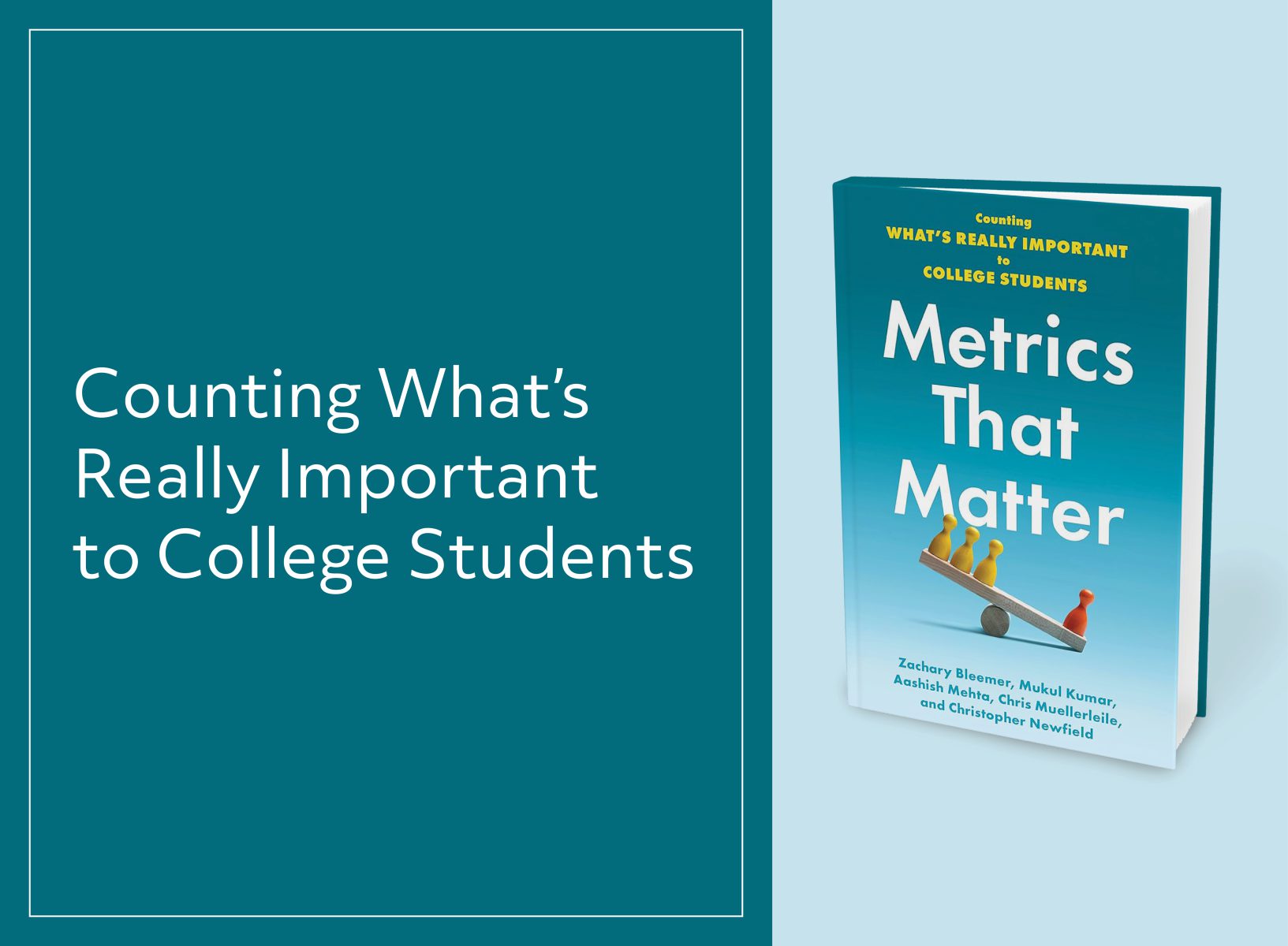Three metrics to ignore when making decisions about college

The decisions we make about our own education can be among the most significant and consequential of our lives. Should I go to college? What schools should I apply to or attend? If I do enroll in a two- or four-year college program, what should I study?
To inform these decisions, students and their parents often turn to college rankings or data provided by universities. Unfortunately, rankings can be misleading (even the president of top-ranked Princeton thinks so), and the data provided by individual schools, some of which is collected in the Department of Education’s College Scorecard, isn’t always as informative as it claims to be.
Luckily, the data students do need is increasingly available, thanks to the efforts of researchers who have been studying the educational outcomes of millions of students across the U.S. over the last several decades.
In a new book, “Metrics That Matter: Counting What’s Really Important to College Students,” Zachary Bleemer, Assistant Professor of Economics at Princeton University, and his fellow researchers sort through that data and provide direct, actionable advice for students making big decisions about their education.
In each chapter of the book, the authors take closer look at a data point students are told to consider and then present more useful alternatives. Here are a few of their recommendations. To learn more, read the full book.
Don’t: Measure the quality of a school by its selectivity.
Instead, focus on how much money a school spends annually per student–a number that’s published by the federal government and is easy to find.
The authors present an abundance of evidence that students, parents, admissions advisors, and others equate selectivity with quality. That is, the best school is the one that’s hardest to get into.
But that’s a flawed way of thinking for many reasons. To start, while selectivity as a metric claims to measure the quality of admitted students (and the school that admits them), what it actually does is measure relative supply for a university’s demand. In addition to being misleading in other ways, that statistic can be doctored if universities, through marketing campaigns and other tactics, encourage more applications from students they ultimately plan to reject.
The authors review several other reasons selectivity is a flawed measure, but bottom line: A much better predictor of student success, Bleemer and his co-authors argue, is how much a university invests in educating each of its students.
Don’t: Use an ROI calculator or let it influence your decisions.
Instead, students should ignore these calculators–which inaccurately measure the private financial value of college–and don’t account for the important and very real non-financial benefits of higher education.
To help decide whether to attend college or what to study, many students turn to ROI calculators–offered by companies like PayScale–that claim to help you decide what college will give you the “best value.”
But these calculators are nearly useless, the authors write, arguing that “the numbers that result from calculations of return on investment are often based on preposterous assumptions and misleading data.”
The authors provide a long list of reasons these calculators do a poor job measuring the financial benefits of a given college or degree, while also ignoring the non-financial benefits of an education, including the long-term impacts of health and wellbeing or the impact of a person’s education on their community.
Don’t: Place too much emphasis on average predicted wages when choosing a college major.
Instead, remember that these metrics neither guarantee nor prevent you from earning a high salary after choosing a specific major, and that there are meaningful financial benefits from studying your most-preferred major.
When choosing a college major, many students are drawn to or feel pressure to choose a major that claims to promise a higher wage after graduation. But these wage-by-major statistics are “filled with hidden assumptions,” that make them difficult to interpret, the authors write.
For example, one popular study that looked at the median annual wages of college-educated workers found that anthropology majors earn lower median wages than history majors by about 10 percent.
But the reason why isn’t exactly clear. One explanation is that an education in history does, in fact, increase a student’s labor market value relative to an education in anthropology. But it could also be that the students who are likely to earn a high wage no matter what college major they choose are more likely to prefer history to anthropology. Another explanation is that universities push high-achieving students into certain majors. Another is that students who chose certain majors aren’t seen in the employment data at all because they went to graduate school, dropped out of school, or didn’t find a job.
All of these possibilities make the “wage-by-major” metric much less useful than it appears on the surface, and not a metric that students should exclusively rely on when choosing where to focus their studies.
And remember, passions matter: The book also highlights recent economic research showing that in many cases, students end up earning higher wages after choosing fields that they strongly prefer even if those fields don’t have higher average wages.